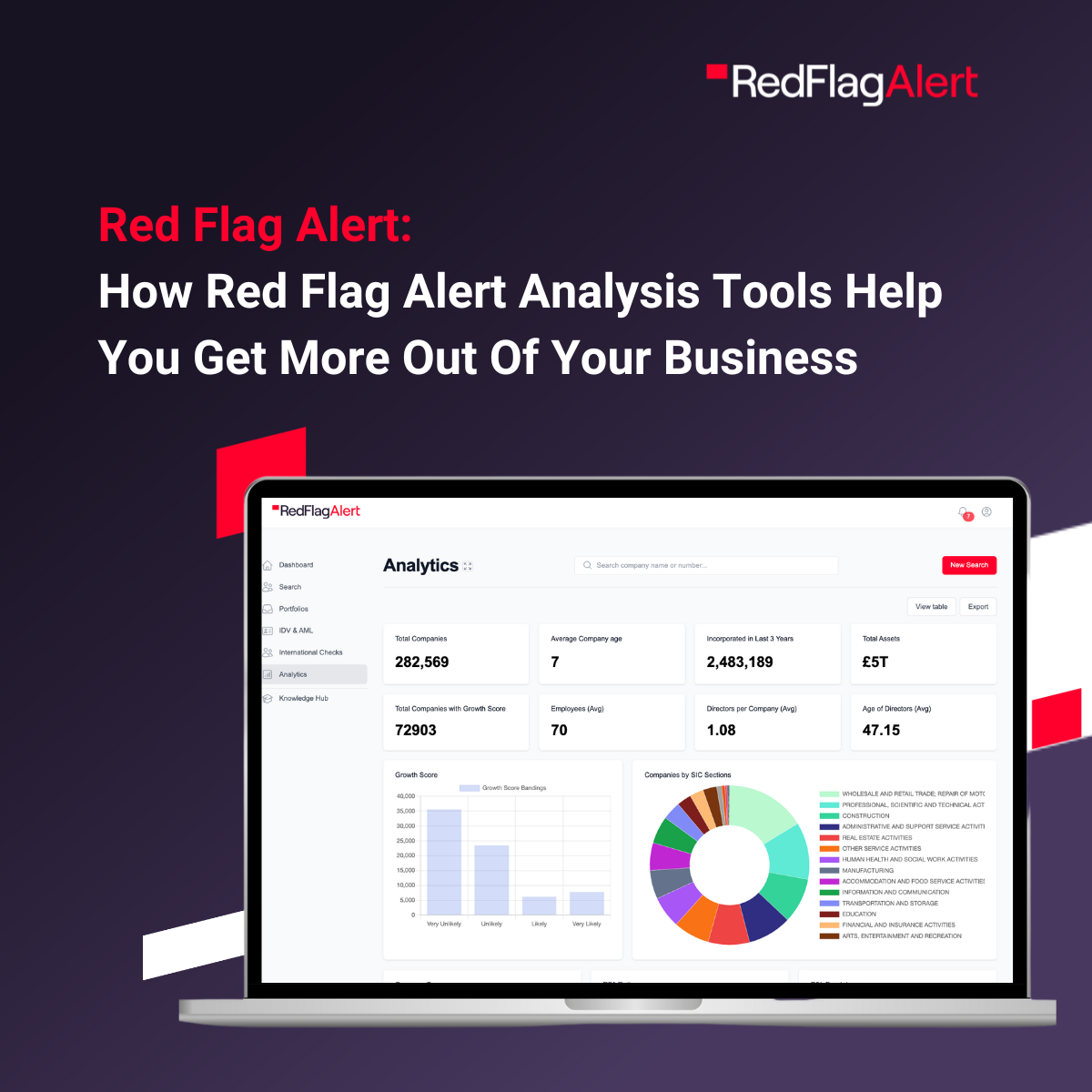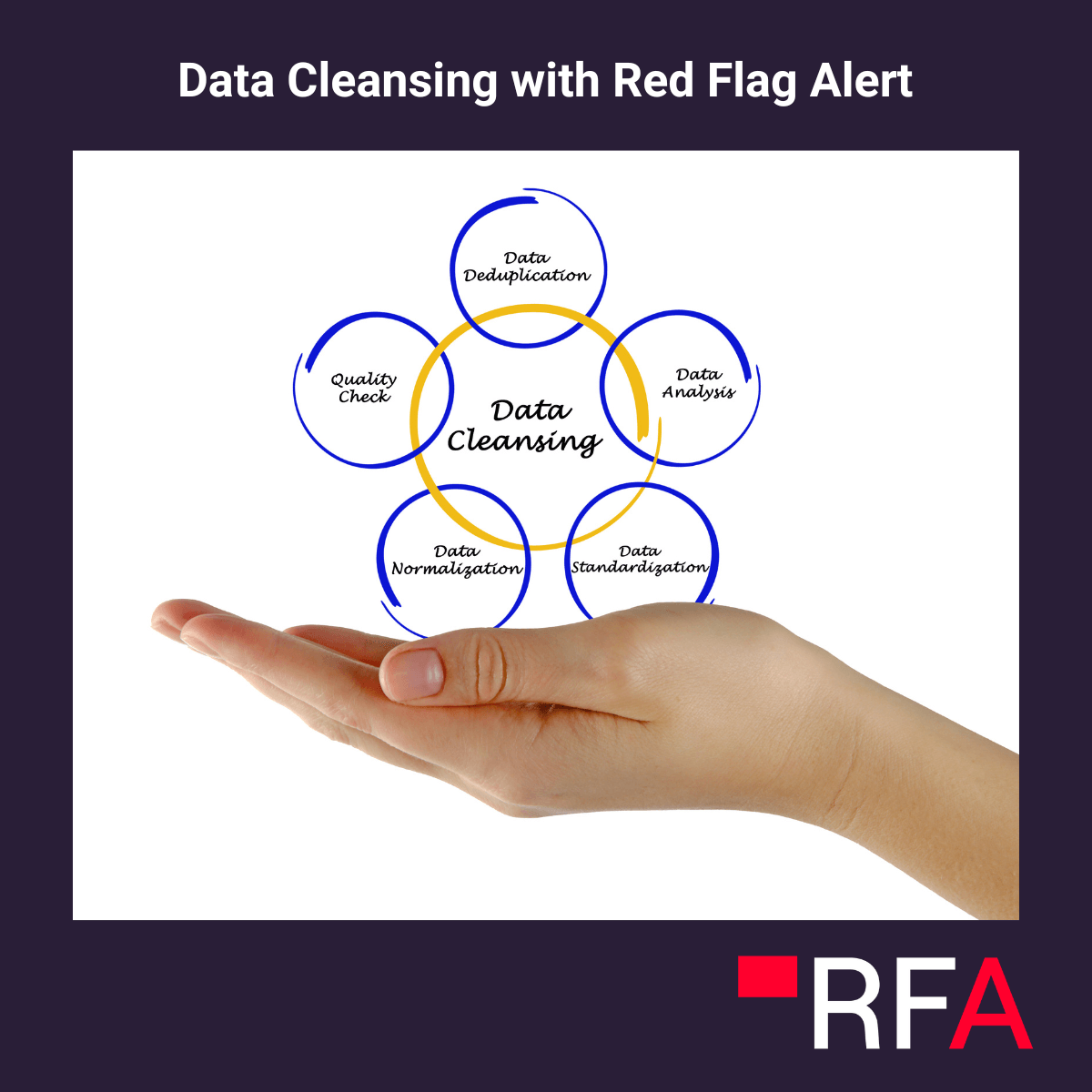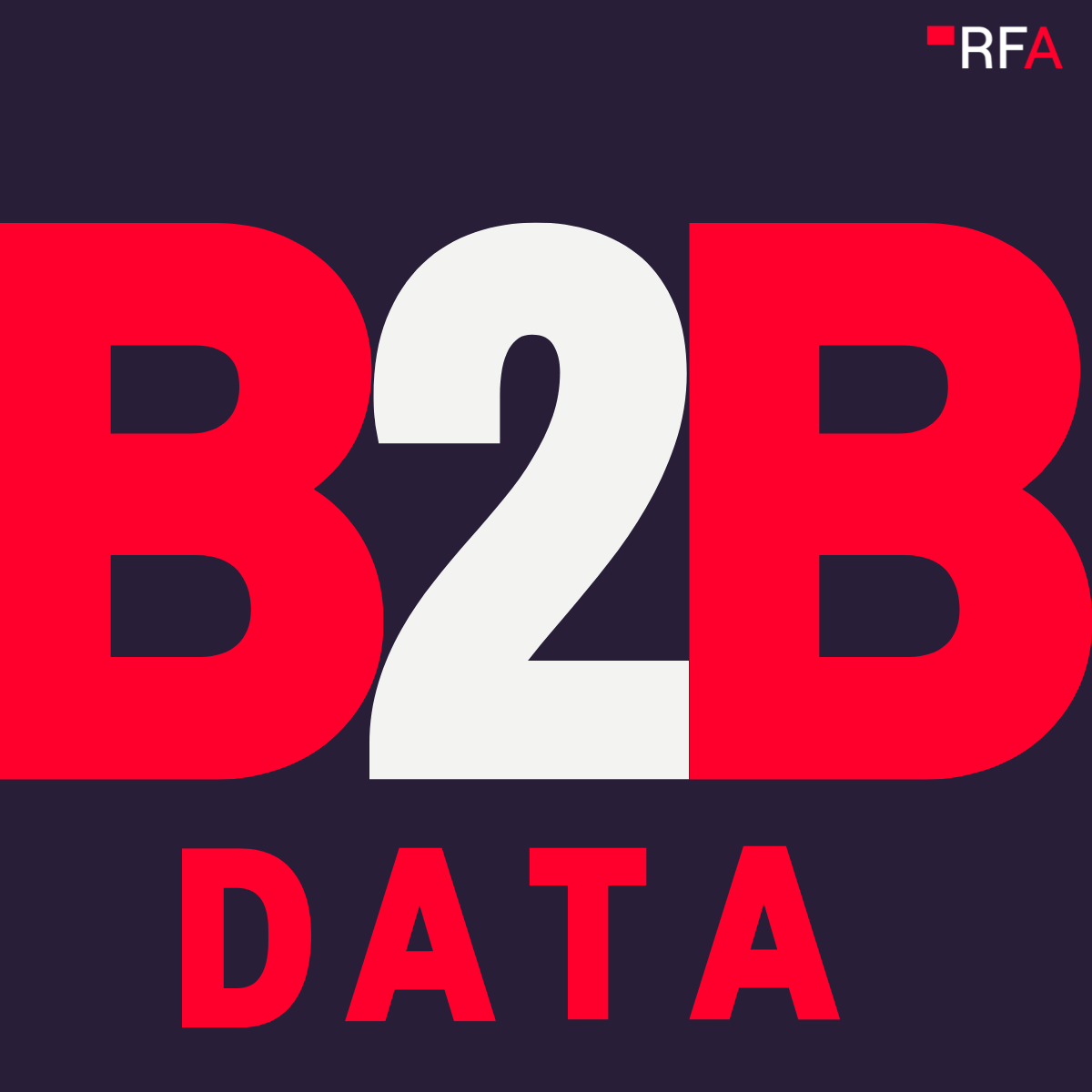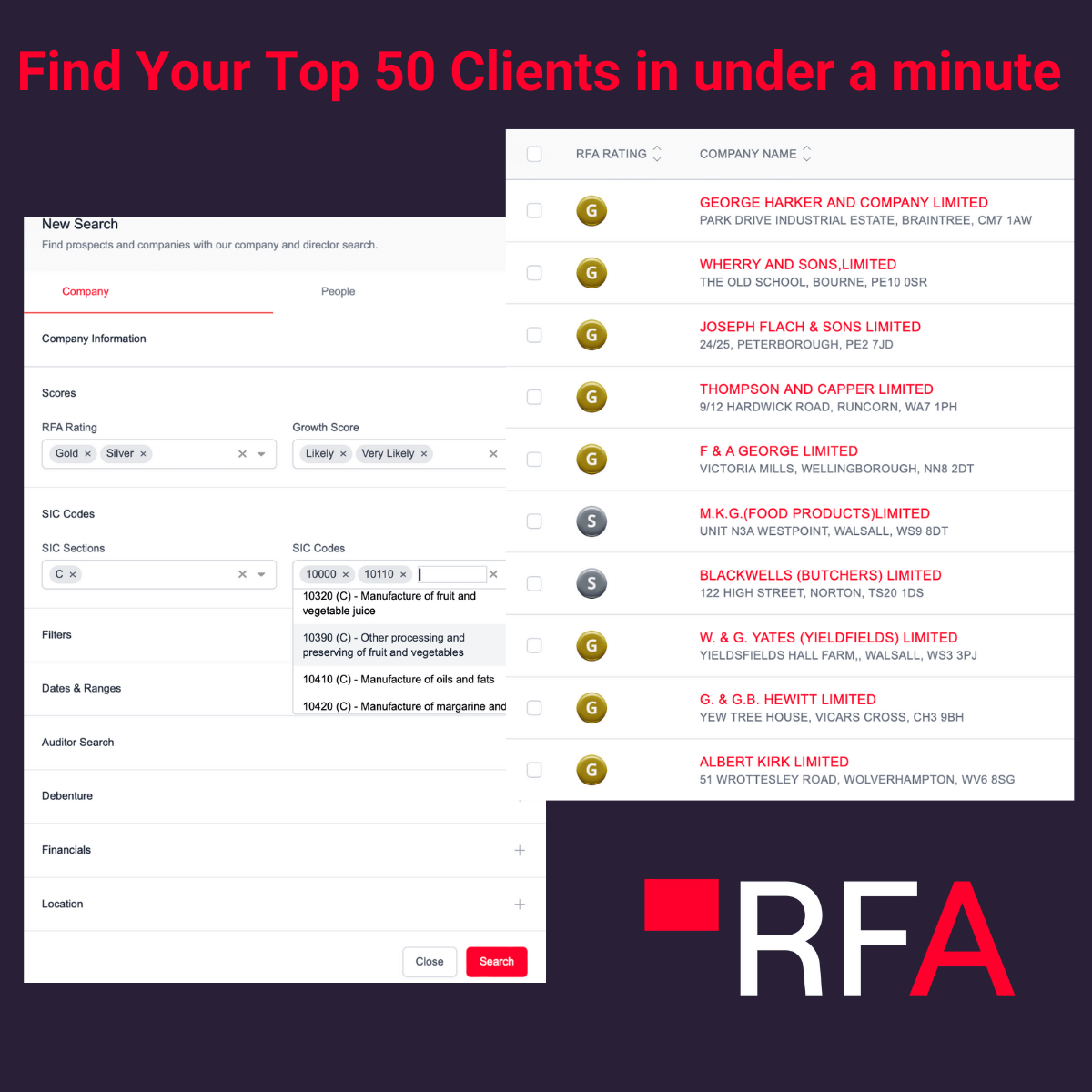In the first article, we looked at the theory behind objection handling – you can read it here (link to part 1). Now we’re going to look at how we deal with objections at Red Flag Alert.
A Bit About Red Flag Alert
To fully understand the following section on customer objections, you’ll need to know a bit about Red Flag Alert. While I’m sure many readers already know about our product, in case you don’t, here is a quick rundown.
Red Flag Alert collates data from various sources to provide business intelligence on every company in the UK. This data includes in‐depth financial details, as well as information about a company’s location, size, industry, management, contact details, and more. All this information is updated in real time.
Our customers use this data in many ways. Some use it to help them spot risk – for example, by performing credit checks or alerting them to when the businesses they work with enter financial distress.
The data is also a useful tool for sales teams who can use it to build highly targeted prospect lists. Alternatively, they can use it to discover triggers that suggest when companies might be most likely to need their service. This helps sales teams not only find better leads, but also tailor their sales strategies to the specific challenges a company is facing.
Red Flag Alert also helps our clients with a range of compliance requirements, from GDPR to AML. We work with companies in a variety of industries, including energy, finance, professional services, and sales. You can find out more about our service here.
How Red Flag Alert Deals with Customer Objections
We’ve organised customer objections into the following categories: value‐based objections, price-based objections, time‐based objections, and decision‐based objections.
In each category, we have included some of the specific objections our sales team comes up against. While we deal with objections in a way specific to Red Flag Alert, we’re sure the methods we use have a lot in common with other companies.
Value
“I don’t understand the product.”
If the prospect says they don’t understand the product, it shows we haven’t done an adequate job explaining the Red Flag Alert value proposition. Instead of going over the sales pitch again, we ask what it is the prospect doesn’t understand and then work through the finer details. All members of our sales team know our product inside out, so they can usually answer any question a prospect has.
“I don’t know how your product benefits our business.”
If this is the case, the prospect may need more information about the specific benefits of Red Flag Alert concerning their industry. Here we can use specific examples that show how our product has helped companies similar to theirs. For example, if we are selling to an energy brokerage, we can point out how we helped Power Solutions UK increase sales conversion by 123 per cent by creating targeted sales lists.
“I don’t think we need what you offer.”
Sometimes a prospect seems initially interested in our product, but ends up saying they don’t feel like they need what we offer. This suggests we don’t understand the challenges the business is facing well enough.
In this case, our sales teams can spend a bit more time asking the prospect about the problems they have. They can then reframe the service we provide in a way that shows its value to their business.
Companies often find they would like to use our data, but don’t know the best way to use it. Because of this, we often work with companies to come up with customised solutions. We can mention this in our sales calls.
For example, Wave Energy needed help with their business decision‐making and processes. Our team was able to work with them to implement a system that helped find prospects, manage credit risk, and streamline their data management processes.
“I don’t see the ROI potential.”
Red Flag Alert provides ROI in a variety of different ways, from making teams more productive to increasing sales, to helping businesses avoid risk. If a company says they don’t see the potential for ROI on the product, we consider a different angle.
In this case, we can find out more about their specific challenges and highlight other ways to see a strong ROI. For example, if we have been focusing on how the data we provide helps sales teams create highly segmented lists, we can instead focus on how it helps companies avoid working with customers that could be a high credit risk.
Alternatively, we can offer concrete examples of customers that have used our service to increase revenue. For example, we can explain how we helped NSL Telecoms increase revenue per client by 21 per cent. If a prospect sees specific examples like this, they may be more convinced.
“We already perform well in the area your product helps with.”
Let’s say we have been focusing on how Red Flag Alert helps sales teams. If the prospect says they don’t need any help with sales because they already have a high‐performing sales team, we can begin to focus on other areas where our product will provide more value — for example, risk management or productivity.
Or, if our rep thinks that despite what the prospect says, the company’s sales team could benefit from our product, they can dig a little deeper into the prospect’s sales process to find out areas where we can help. Even sales teams that are already performing well may benefit from real‐time business intelligence to tailor sales pitches, for example.
Time
“We don’t have the time to implement the system.”
The companies our sales team speak to are often very busy. Implementing a solution like Red Flag Alert, and getting the most out of it, does require some time upfront to put in place new processes and integrate the data into existing systems. As such, it is only natural that companies would worry about how much time this could take.
When this objection comes up, at Red Flag Alert we point to the steps we take to make the implementation process manageable. This includes performing audits on the data a company already uses and working out optimal ways to implement our data into existing workflows. We also provide training to show users how to get the most out of it.
Ultimately, we attempt to show that while it can seem like a big commitment, Red Flag Alert has the resources to make implementing our product incredibly simple.
“We’re worried it won’t fit into our system.”
Most businesses already have a set way of doing things. Many companies we speak to are worried about how Red Flag Alert will fit into their existing workflows. For example, they may already have customer data saved into their CRM.
In these situations, we explain that we have developed Red Flag Alert to work alongside the other tools that businesses already use. Specifically, our API means it is easy to integrate Red Flag Alert with a number of the most popular CRM software solutions including Microsoft Dynamics, Sage, Salesforce, Sugar CRM and Zoho.
We can also provide training to those who work at the customer’s business to ensure they know how to get the most from this new information and fit it into their workflows.
“We already use another service for these uses.”
We aren’t aware of any other services that provide the exact solution we offer. However, occasionally, clients will tell us they already use another service to take care of something our product helps with.
For example, they may buy lead lists from a third party and not feel like they need to build targeted sales lists using our software. Alternatively, they may be happy using LinkedIn to contact other businesses and think they don’t need the contact details that come with our data.
In these cases, our sales team can dig deeper into how they use the other services and find out if they have any issues with them. For example, the prospect may feel that that the contacts they receive from lead lists are hard to convert. Or they might mention that while they use LinkedIn to contact other companies, messages are often not seen by relevant decision‐makers.
If this is the case, our sales team can point to the benefits of our product over the way the business currently works.
“Your solution is too complicated.”
Sometimes a prospect will be interested in the product, but worried about their ability to use it. In this instance, our sales team can explain that we provide extensive customer support. This helps each business that uses Red Flag Alert to get the most out of it.
We can also focus on one or two uses that will benefit their business the most, rather than focusing on everything the product does.
Price
“Your product is too expensive.”
If a prospect thinks the product is too expensive, it suggests we haven’t put across the benefits or potential ROI of our product effectively. To overcome this customer objection, we will offer statistics or figures that shows Red Flag Alert is worth the price.
An example we often like to use – especially when selling the product on its benefits to sales teams – is that of a financial broker that was able to use Red Flag Alert to increase their sales team’s conversion ratio from 0.5 per cent up to 12 per cent.
“We don’t have the budget available right now.”
Sometimes companies will not have the budget available to dedicate to our solution at that time. In this case, we can speak to the prospect to organise a time when it would be better to discuss a sale. Setting up a meeting early on puts us in a good position to make a sale once the company has the funds available to purchase.
“We don’t want to get stuck in a contract.”
Sometimes prospects don’t want to enter into a contract for our service. If this is the customer’s objection, our sales team usually attempts to re‐establish the value of the product so the customer is happier with making a long‐term purchasing decision.
Decisions-Based
“I don’t have the authority to make a buying decision.”
This a common objection and one that we’re sure Red Flag Alert deals with in a similar way to other companies. In this case, we ask how we can get in touch with the correct person.
“I’ll need to discuss with the other decision‐makers.”
In cases when there are multiple decision‐makers, Red Flag Alert will often suggest setting up a presentation with all relevant parties present. We can use our initial contact to discover some of the concerns the other decision‐makers may have. This helps us tailor our presentation to their specific needs.
In situations where this isn’t possible but we are pretty sure our contact is enthusiastic about our product, we can help them sell the solution to the other stakeholders by clearing up any answers to questions they may be asked. We can also point them towards sales collateral they can use to help make their case.
Wrapping Up
It’s rare for a lead to become a customer without any objections arising during the sales process. It is good practice for sales teams to prepare an objection handling strategy to help overcome these roadblocks.
Of course, sometimes, no matter what you do, you won’t be able to get a prospect over their objection. Other times what appears to be a customer objection is simply the prospect politely brushing you off. Nonetheless, being prepared gives you the best chance of making a sale.
To learn how Red Flag Alert’s B2B prospector tool can help your business grow, get started with a free trial.




